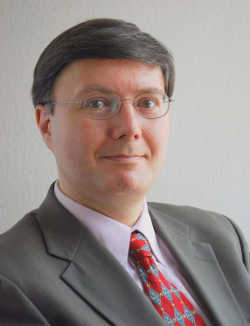- Lake County News reports
- Posted On
President Biden expected to expand Berryessa Snow Mountain National Monument

LAKE COUNTY, Calif. — The Berryessa Snow Mountain National Monument is expected to soon be expanded thanks to anticipated action by President Joe Biden.
The 330,780-acre monument — most of which is located in Lake County — is being considered for expansion through the addition of the Walker Ridge area.
That area, totaling 13,753 acres, will be referred to as “Molok Luyuk,” which means, “Condor Ridge,” in the Patwin language.
Reports came out of Washington, D.C. this week that President Biden plans to approve the monument’s expansion.
Biden was vice president when, on July 10, 2015, President Barack Obama — following an extensive campaign by state, local, tribal and federal representatives — designated the monument, which runs across the California Coastal Range in Colusa, Glenn, Lake, Mendocino, Napa, Solano and Yolo counties.
The rugged land boasts abundant wildlife, plants and other natural resources, and is a haven for outdoor recreation. It is managed by the Mendocino National Forest and the Bureau of Land Management.
Congressman Mike Thompson, Lake County’s longtime member of the House of Representatives, introduced the original legislation to designate Berryessa Monument back in 2015 and is the co-sponsor of the bill to expand the monument, as well.
"I worked to designate the Berryessa Snow Mountain region as a national monument in 2015, and I've worked to expand it ever since. The Monument's designation has played a crucial role in protecting the biodiversity of Northern California and an expansion of the Monument would have an immense positive impact on the region,” Thompson said.
While Biden’s action on the monument is pending, Sen. Bill Dodd, D-Napa, has a resolution urging the Berryessa Snow Mountain expansion which is set to be heard in a state Senate committee early next week.
“I thank the president for recognizing the incredible beauty and rich resources that make Berryessa Snow Mountain one of the most scenic and diverse landscapes in all of Northern California,” Sen. Dodd said. “It is vital to include this additional piece, which was home to native tribes for thousands of years. We can recognize the land’s cultural significance while protecting it for generations to come.”
In 2015, Sen. Dodd wrote Assembly Joint Resolution 4, the first time a state Legislature passed a measure asking the president to create a national monument. At that time, he was the Assembly member representing an area that included Lake County.
“I am proud to have been on hand when President Obama finalized the official designation,” Sen. Dodd said.
The designation arrives amid vanishing wild lands around the world. Nationwide, natural land is declining at a rate of one football field every 30 seconds, threatening plant and animal species and contributing to climate change, Dodd pointed out.
In response, both President Joe Biden and Gov. Gavin Newsom have championed the so-called 30X30 goal, which sets aside 30% of natural and coastal waters by 2030 to protect habitat, preserve history and maintain recreational opportunities.
Now, proposals before the president and Congress would expand Berryessa Snow Mountain Monument by 3,900 acres in Lake County.
They also support renaming the area commonly known as Walker Ridge to Molok Luyuk, reflecting the area’s cultural significance to many federally recognized tribes in the region.
By doing so, it would also provide opportunities for partnerships between the tribes, BLM and the U.S. Forest Service.
Sen. Dodd’s Senate Joint Resolution 10 helps fulfill state and federal goals by supporting federal approval of the monument’s expansion.
The state Senate Natural Resources committee is expected to endorse Sen. Dodd’s bill in a hearing on Monday.
Editor’s note: This story has been updated with additional information on the original legislation by Congressman Mike Thompson.

 How to resolve AdBlock issue?
How to resolve AdBlock issue? 
















